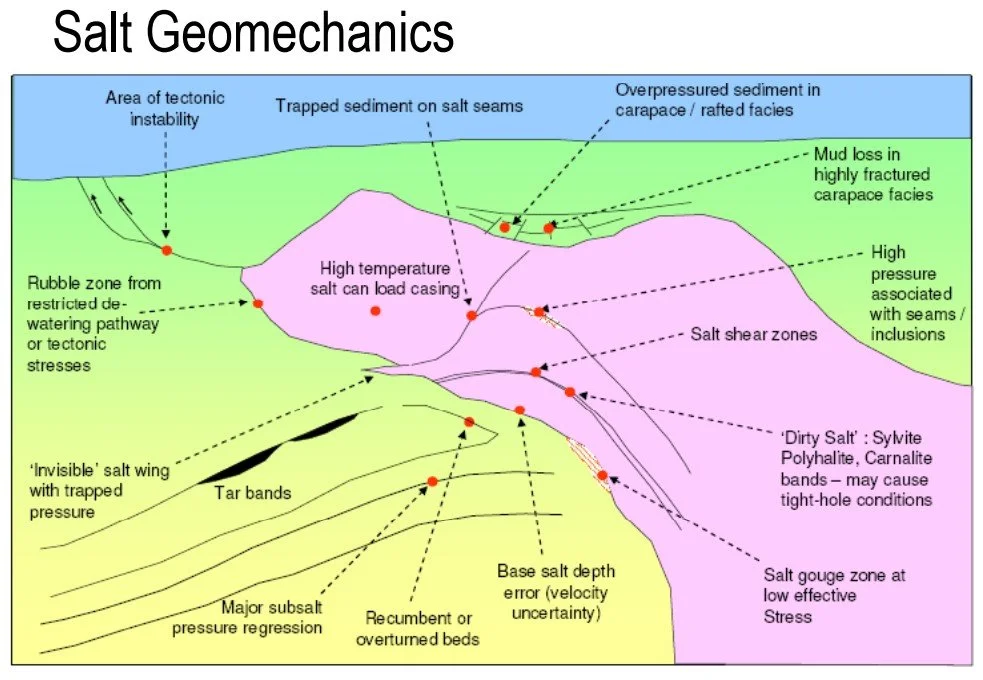Salt Drilling and its Challenges
Salt drilling poses several challenges because salt behavior differs significantly from other clastic sediments. These conditions were better understood as the Industry drilled more wells through salt layers. Several experiments conducted over the years and experience drilling salt in different basins helped enrich the industry's knowledge base and a better understanding of the salt drilling situation.
Predicting pore and fracture pressure below the salt presents a complex challenge. To address this issue, it is vital to integrate all available data from well logs, seismic readings, structural analysis, and drilling events. A complete comprehension of pressure development starts with understanding the structural evolution of salt over geological time. Each salt play possesses unique characteristics depending on the depositional process, age, depth, temperature, and mineral composition.
Subsalt drilling encounters its most significant challenge in the rubble zone. This zone may have various events, including severe drilling losses, wellbore instabilities, and well control problems. Cementing issues stemming from weak formations beneath the salt pose significant challenges for future well development and can be costly.
Real-time information is crucial for accurately diagnosing drilling events and making informed decisions. The narrow drilling window in the rubble zone, where pore pressure is close to fracture pressure, is the primary cause of problems encountered while drilling below the salt.
Proper mud weight design for salt exit ensures the well's success. Depending on the approach, experience level, and preparedness to take quick actions in emergencies, the mud weight can be kept high or low while exiting the salt. The preferred approach involves exiting the salt with a lower mud weight in anticipation of losses.
There are two fundamental approaches to drilling subsalt wells. The conventional method involves drilling and setting the casing below the salt, while the more cautious approach advocates setting the casing before exiting the salt. Both approaches have their pros and cons.
Salt drilling strategies can be divided into three parts:
Best Practices and Guidelines for Drilling to Top of Salt Formation
Best Practices and Guidelines for Drilling Through Salt Formation
Best Practices and Guidelines for Drilling Below Salt Formation

